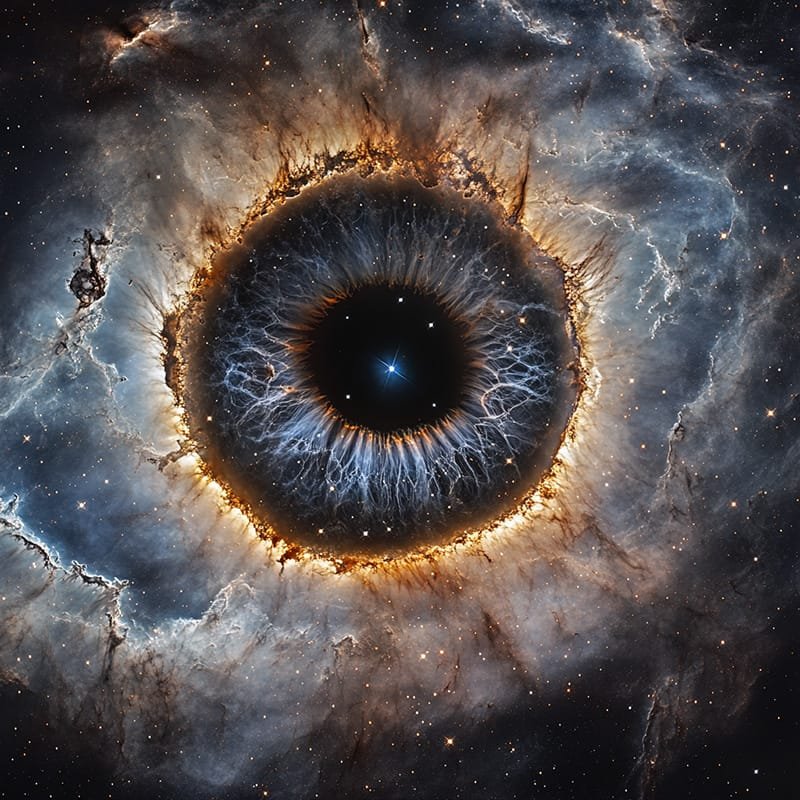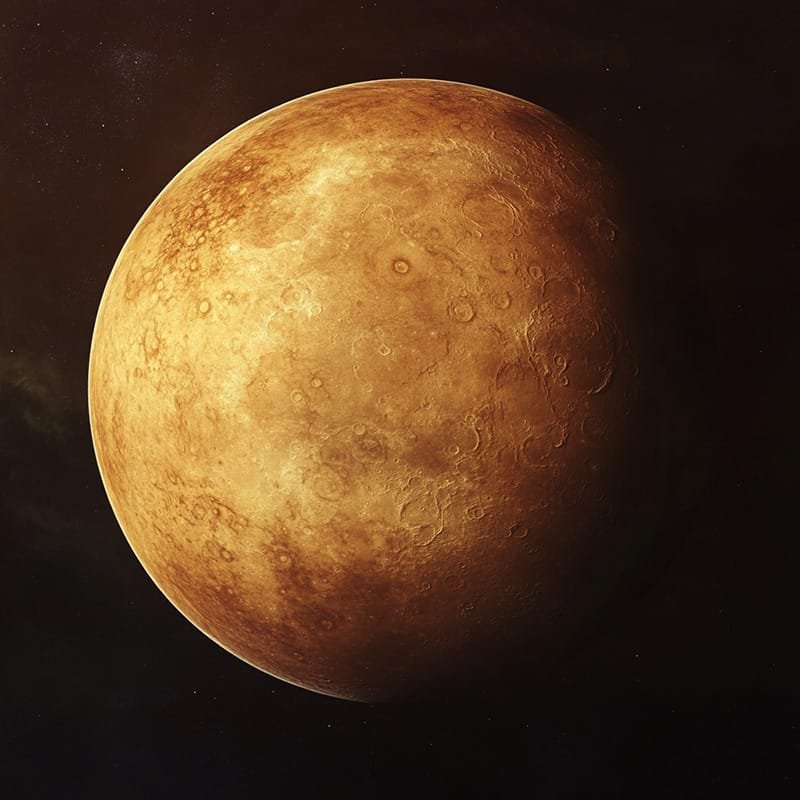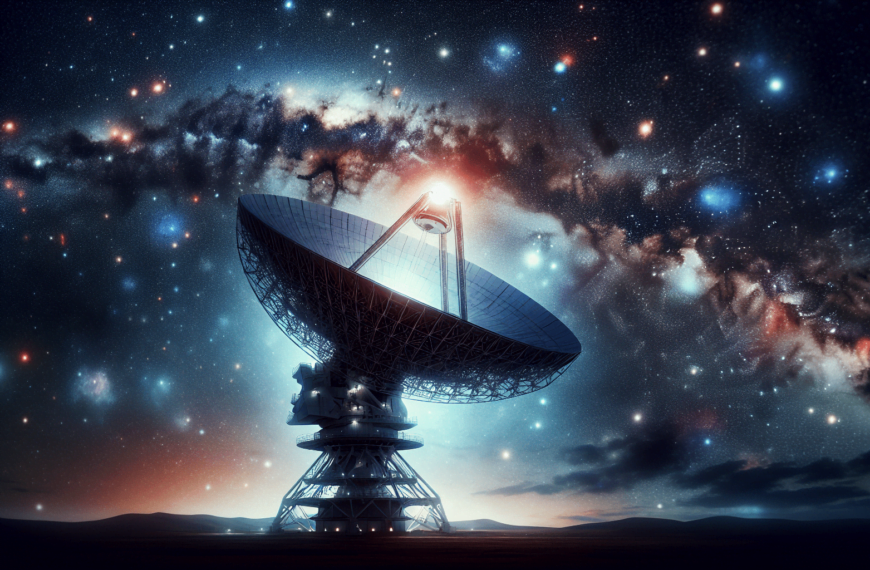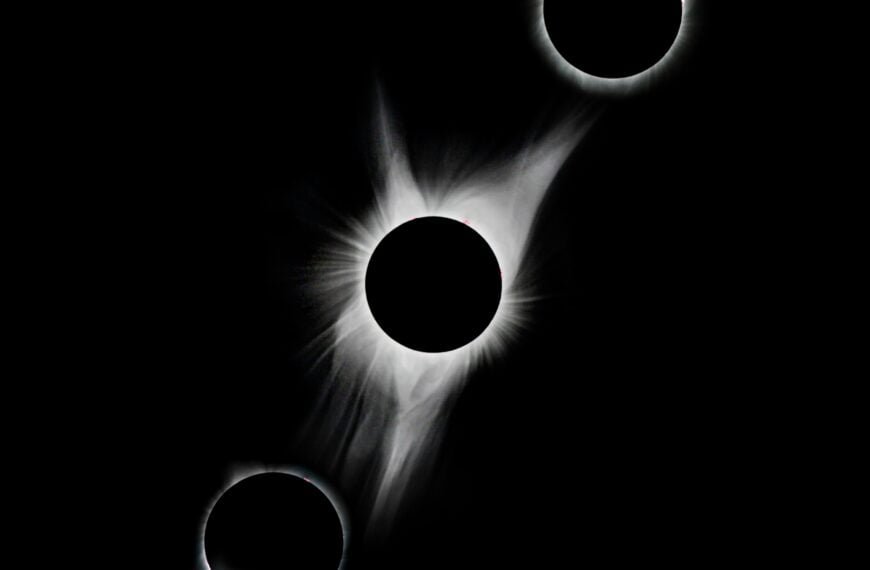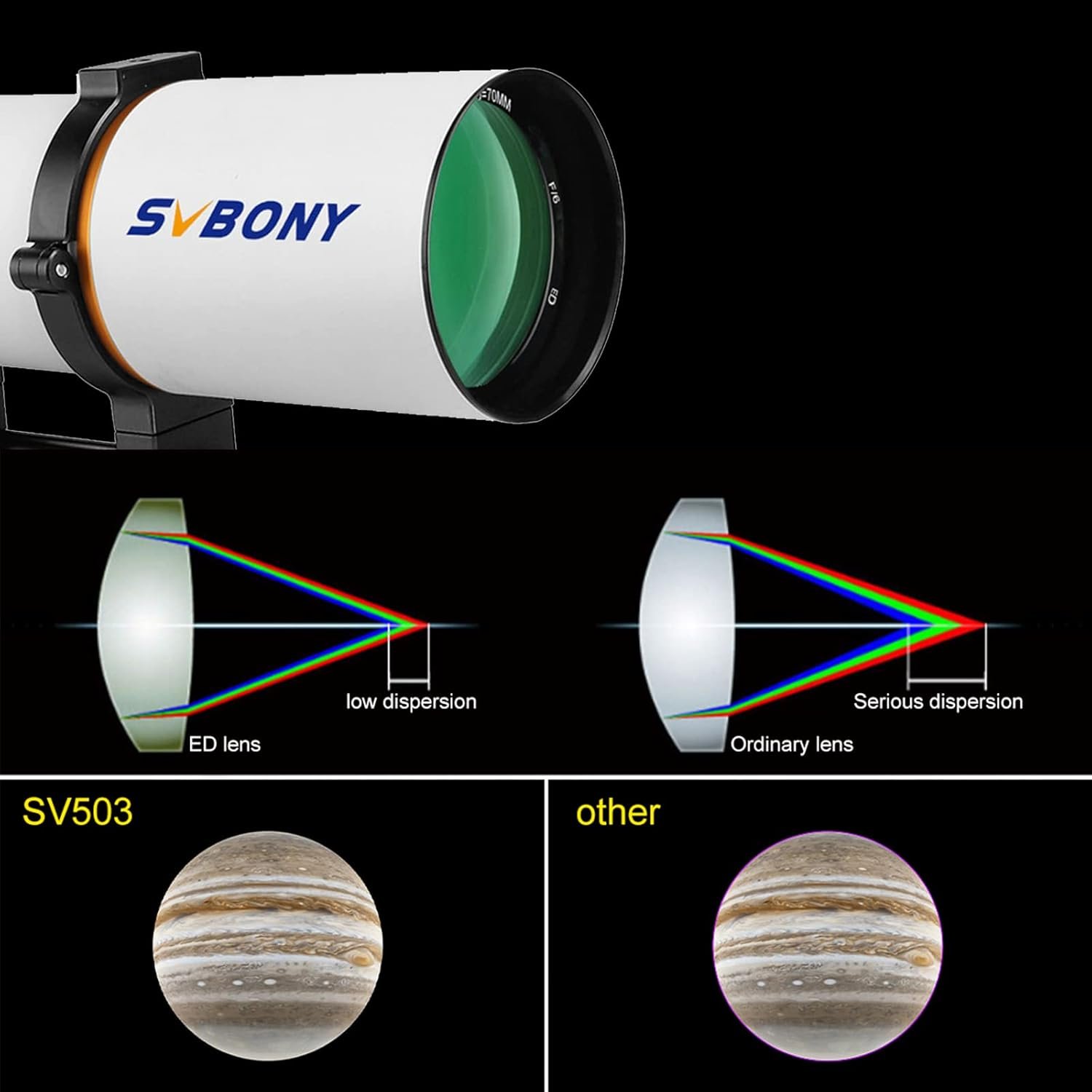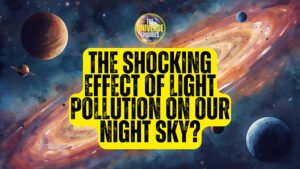Cosmic “Eyes in Space” are galaxy formations resembling eyes, discovered by NASA. They form through gravitational lensing and inspire wonder.
Key Takeaways 📝
- Cosmic “Eyes in Space” are real galaxy formations that create the illusion of eyes, captivating astronomers and the public alike with their unique appearance.
- NASA has utilized advanced technology, such as the Hubble Space Telescope, to capture stunning images of these formations, revealing their existence across various regions of the universe.
- The formation of these cosmic eyes is primarily a result of gravitational lensing, a phenomenon that bends light from distant galaxies, creating striking visual effects.
- These discoveries not only enhance our understanding of astrophysics but also inspire cultural expressions in art and literature, serving as powerful educational tools for teaching about the universe.
- The ongoing exploration of these phenomena promises to unveil further cosmic secrets, highlighting the intricate connection between the universe’s structure and our planet’s future.
Have you ever felt like someone was watching you, even when you were entirely alone? Now imagine this sensation expanded to a cosmic scale, where the eyes are not of humans but of galaxies themselves. In the vast, unending expanse of space, it turns out that these eyes are real, and they are staring straight at us. Intrigued? Let’s embark on this astronomical adventure and explore the phenomenon of “Eyes in Space.”
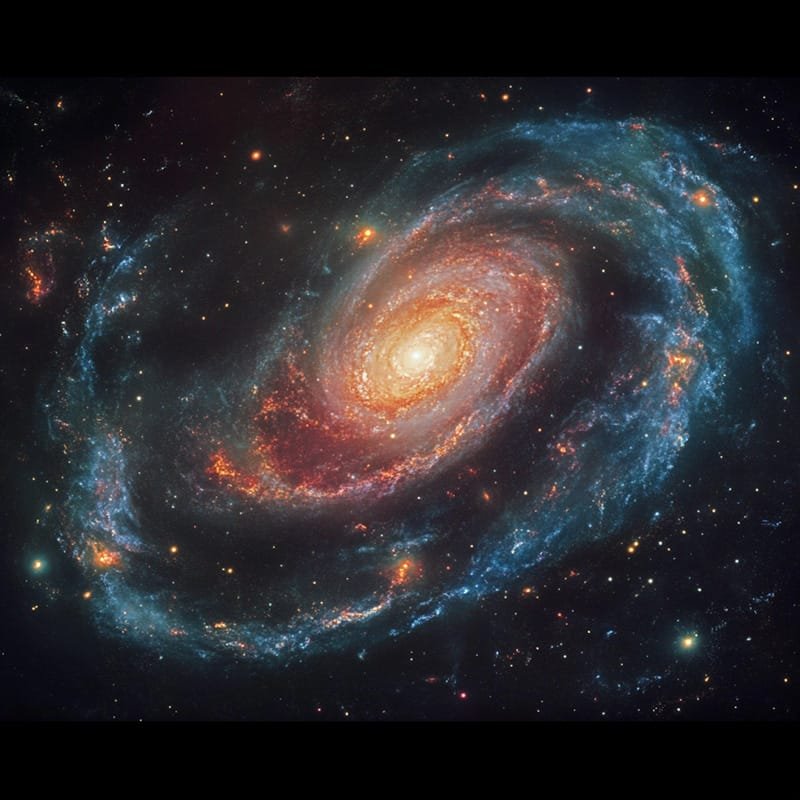
What Are These Eyes in Space?
The cosmic eyes aren’t literal eyes. They are fascinating cosmic structures that, when observed from Earth, resemble the spooky but mesmerizing look of eyes. At the core of these cosmic eyes are galaxies—massive systems of stars, stellar remnants, interstellar gas, dust, and dark matter. These galaxies align in such a way that they create the illusion of eyes peering across the universe.
Who Discovered the Eyes in Space?
NASA, the United States’ space agency, has been at the forefront of discovering these cosmic phenomena. Equipped with advanced telescopes and imaging technology, NASA’s astronomers have captured these striking images, sparking intrigue and wonder across the globe. Behind these discoveries are teams of dedicated astronomers and scientists who tirelessly analyze the cosmos. Their work not only enhances our understanding of the universe but also adds a layer of beauty and mystery to it.
When Were These Eyes Spotted?
While galaxies have been observed for centuries, the specific alignment and discovery of these eye-like structures is relatively recent. Thanks to technological advances, these cosmic features have become more apparent and observable. State-of-the-art telescopes, such as the Hubble Space Telescope, have been pivotal in these discoveries. These instruments allow us to see further and clearer than ever before, unveiling the universe’s hidden gems.
Where in the Universe Are These Eyes?
These cosmic eyes aren’t confined to a single region. They are scattered across the universe, each with its unique formation and characteristics. Some of the most famous cosmic eyes include the “Cartwheel Galaxy” and others that have been captured by space telescopes. Each one offers a unique glimpse into the vastness of space.
Why Do These Eyes Form?
One of the key reasons behind these formations is gravitational lensing. This phenomenon occurs when a massive object, like a galaxy cluster, bends the light from another object behind it, creating a distorted or magnified image. In many cases, these formations are also products of cosmic coincidence. The alignment of galaxies in such a precise manner is rare, making each ‘eye’ a unique occurrence in the universe.
The Science Behind the Cosmic Gaze
Gravitational lensing is not just a cosmic spectacle; it’s a crucial tool for astronomers. It allows them to study distant galaxies and understand the distribution of dark matter in the universe. Dark matter, an invisible substance that makes up most of the universe’s mass, plays a significant role in these formations. It influences the gravitational pull that leads to lensing effects.
The Cultural Impact of Eyes in Space
These stunning cosmic formations have inspired artists and writers alike. The concept of eyes in space has found its way into science fiction, paintings, and even music. For educators, these phenomena offer a captivating way to teach about astronomy, physics, and the universe’s wonders. They serve as a gateway to discussing broader cosmic concepts.
The Future of Cosmic Exploration
With new missions and telescopes on the horizon, such as the James Webb Space Telescope, the potential to discover more cosmic eyes increases. These missions promise to unveil even more of the universe’s secrets. Astronomers continue to study these phenomena, hoping to unravel the mysteries of the universe’s structure and formation.
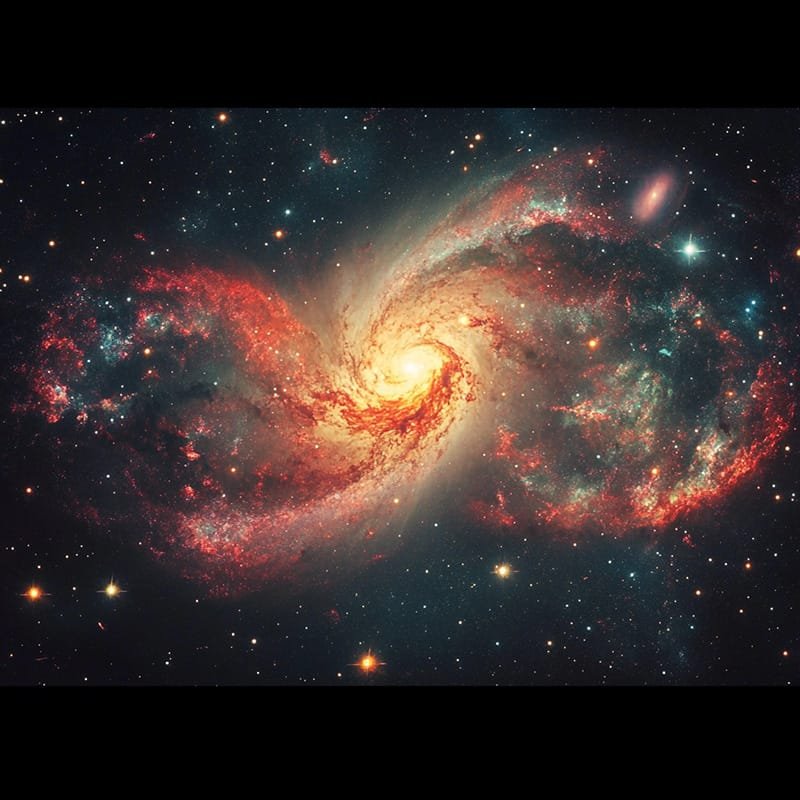
Eyes in Space and Life After Warming
As we gaze into the cosmic eyes, we are reminded of our own planet’s beauty. A stunning view of Earth from space, with its vibrant blues and whites, highlights the theme of “Life After Warming,” urging us to reflect on our planet’s future. The study of space not only enhances our understanding of the cosmos but also provides insights into Earth’s climate and environmental changes.
Personal Insights
For me, the idea of eyes in space offers a humbling perspective. It reminds us of our small place in the universe and the vastness that surrounds us. There’s a certain beauty in the unknown, in the mysteries that the universe holds. These cosmic eyes are a testament to the wonders that await discovery.
Engaging with the Cosmic Gaze
You don’t need a telescope to appreciate these phenomena. Many online resources and apps allow you to explore the universe right from your home. Engage with astronomy communities, whether online or locally. Sharing and discussing these discoveries with others can enrich your understanding and appreciation.
The Cosmic Eyes: A Gateway to Infinite Wonder
The discovery of “Eyes in Space” is more than a scientific curiosity; it’s a reminder of the universe’s wonder and complexity. As we continue to explore the cosmos, these cosmic eyes will undoubtedly inspire and intrigue us, urging us to look beyond our earthly confines and into the vast expanse that awaits.
FAQs about Eyes in Space
What are “Eyes in Space”?
“Eyes in Space” refer to cosmic structures that resemble eyes, primarily formed by the alignment of galaxies and influenced by gravitational lensing.
How do scientists discover these cosmic eyes?
Scientists use advanced telescopes, like the Hubble Space Telescope, to observe and capture images of these unique formations.
Why do these formations look like eyes?
The eye-like appearance is often due to gravitational lensing, where the light from distant galaxies is bent and magnified by intervening massive objects.
How can I learn more about space phenomena?
You can explore online astronomy resources, join local astronomy clubs, and follow the latest space missions and discoveries.
Are these cosmic eyes rare?
Yes, the alignment and conditions needed to create these formations are quite rare, making each discovery significant

